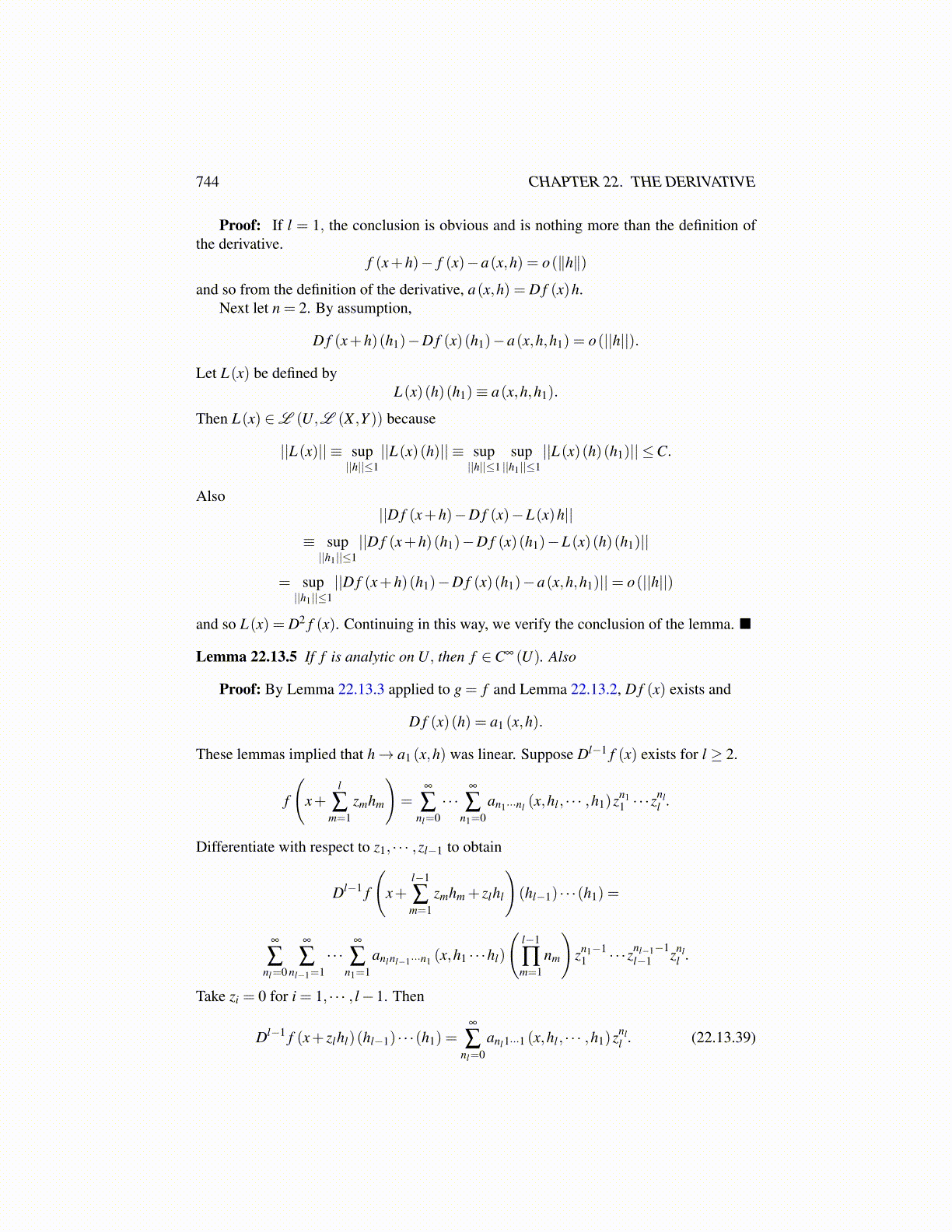
744 CHAPTER 22. THE DERIVATIVE
Proof: If l = 1, the conclusion is obvious and is nothing more than the definition ofthe derivative.
f (x+h)− f (x)−a(x,h) = o(∥h∥)
and so from the definition of the derivative, a(x,h) = D f (x)h.Next let n = 2. By assumption,
D f (x+h)(h1)−D f (x)(h1)−a(x,h,h1) = o(||h||).
Let L(x) be defined byL(x)(h)(h1)≡ a(x,h,h1).
Then L(x) ∈L (U,L (X ,Y )) because
||L(x)|| ≡ sup||h||≤1
||L(x)(h)|| ≡ sup||h||≤1
sup||h1||≤1
||L(x)(h)(h1)|| ≤C.
Also||D f (x+h)−D f (x)−L(x)h||
≡ sup||h1||≤1
||D f (x+h)(h1)−D f (x)(h1)−L(x)(h)(h1)||
= sup||h1||≤1
||D f (x+h)(h1)−D f (x)(h1)−a(x,h,h1)||= o(||h||)
and so L(x) = D2 f (x). Continuing in this way, we verify the conclusion of the lemma.
Lemma 22.13.5 If f is analytic on U, then f ∈C∞ (U). Also
Proof: By Lemma 22.13.3 applied to g = f and Lemma 22.13.2, D f (x) exists and
D f (x)(h) = a1 (x,h).
These lemmas implied that h→ a1 (x,h) was linear. Suppose Dl−1 f (x) exists for l ≥ 2.
f
(x+
l
∑m=1
zmhm
)=
∞
∑nl=0· · ·
∞
∑n1=0
an1···nl (x,hl , · · · ,h1)zn11 · · ·z
nll .
Differentiate with respect to z1, · · · ,zl−1 to obtain
Dl−1 f
(x+
l−1
∑m=1
zmhm + zlhl
)(hl−1) · · ·(h1) =
∞
∑nl=0
∞
∑nl−1=1
· · ·∞
∑n1=1
anlnl−1···n1 (x,h1 · · ·hl)
(l−1
∏m=1
nm
)zn1−1
1 · · ·znl−1−1l−1 znl
l .
Take zi = 0 for i = 1, · · · , l−1. Then
Dl−1 f (x+ zlhl)(hl−1) · · ·(h1) =∞
∑nl=0
anl1···1 (x,hl , · · · ,h1)znll . (22.13.39)